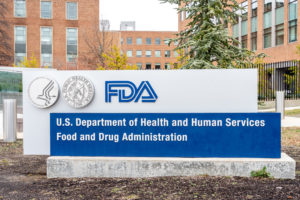
Blog
Consumer Brands: Recall Modernization Needed at FDA for More Effective Communication and Product Removal
The goal of Consumer Brands’ FDA Modernization Campaign launched last year was to elevate the agency to operate at the speed of the consumer, including updating their product recall process. To do so, the FDA should emulate, and not impede, the consumer packaged goods industry’s methods for swiftly targeting and removing impacted products from store shelves.
The safety of consumers is a priority shared by the industry and the FDA, and we are united in our efforts to protect public health by preventing consumer illnesses and injuries, ensuring that products are properly labeled and by preventing the entry of unsafe or mislabeled products into the marketplace. Our members are committed to executing recalls when necessary to protect public health and the CPG industry effectively and efficiently executes recalls today: communications can be disseminated rapidly and products blocked from sale and retrieved immediately.
It’s encouraging that the FDA is engaging with industry on recall modernization, a key element of the agency’s human foods program redesign and planned structural, governance and leadership reforms. Consumer Brands believes that procedural and policy reforms are critical to ensure the FDA’s recall system can effectively protect American consumers, ensure the resiliency and sustainability of the food supply and keep industry viable. But as it stands, the Agency’s current approach should be improved to better meet those needs.
We’ve asked for the FDA to provide clarity about the reorganization of the human foods program and how recalls will be handled within the restructured offices at the Center for Food Safety and Applied Nutrition (CFSAN) and out in the field. The agency would benefit from centralizing its recall functions within a single, centralized team of dedicated recall coordinators to allow faster and more efficient action in urgent public health situations.
The FDA should also leverage emerging technology to enhance recalls, including through building predictive models that can improve the speed and efficiency of recall classifications. The FDA also needs to better facilitate staff coordination and consistency across field districts and headquarters on recalls, standardize recall reporting forms and processes, and reduce geographic siloes for recalls that cross multiple divisions.
Moreover, the FDA needs to advance its work with the USDA Food Safety and Inspection Service (FSIS) to develop best practices and align on common recall management, policies and procedures. The agencies currently use different models, and valuable parts of each can be shared and implemented jointly. Recalls between the agencies need to be consistent to ensure timely identification, classification and communication of recall notices across federal jurisdictions.
It’s important that the FDA advance a modernized recall communication system that can effectively and quickly reach consumers, which could include working with industry to encourage the adoption of voluntary digital disclosure communications over text, email and social media as well as through digital labels like SmartLabel to quickly distribute notices of recalled products. It would similarly benefit the FDA to work with industry on communication strategies for recalled products sold directly to consumers online and to explore opportunities to use new technologies to target communications where appropriate, like in cases when only a certain product is being recalled or an affected product is distributed in just one state. The agency should also work to make the product recall information it collects and publishes online more easily accessible to consumers.
Ultimately, the FDA should be setting the end goal and expectations for recall notices, identifying relevant tools, templates and tested approaches that it believes produce desired consumer behaviors, then letting companies leverage the most relevant and modern communications for their specific recall situation. The agency also needs to work to enhance the visibility of certain recalls to consumers, particularly when a recalled product presents a serious concern to health and safety.
Published on October 5, 2023




